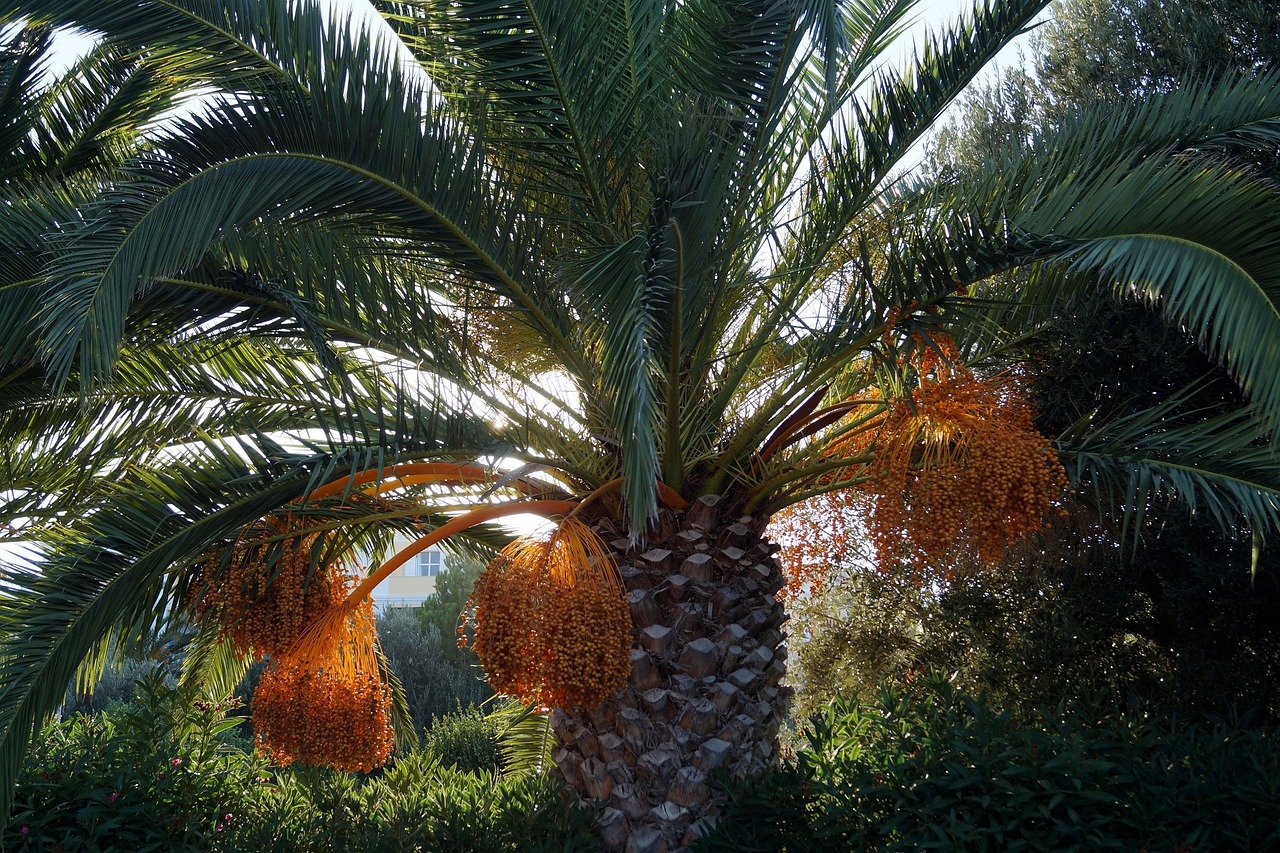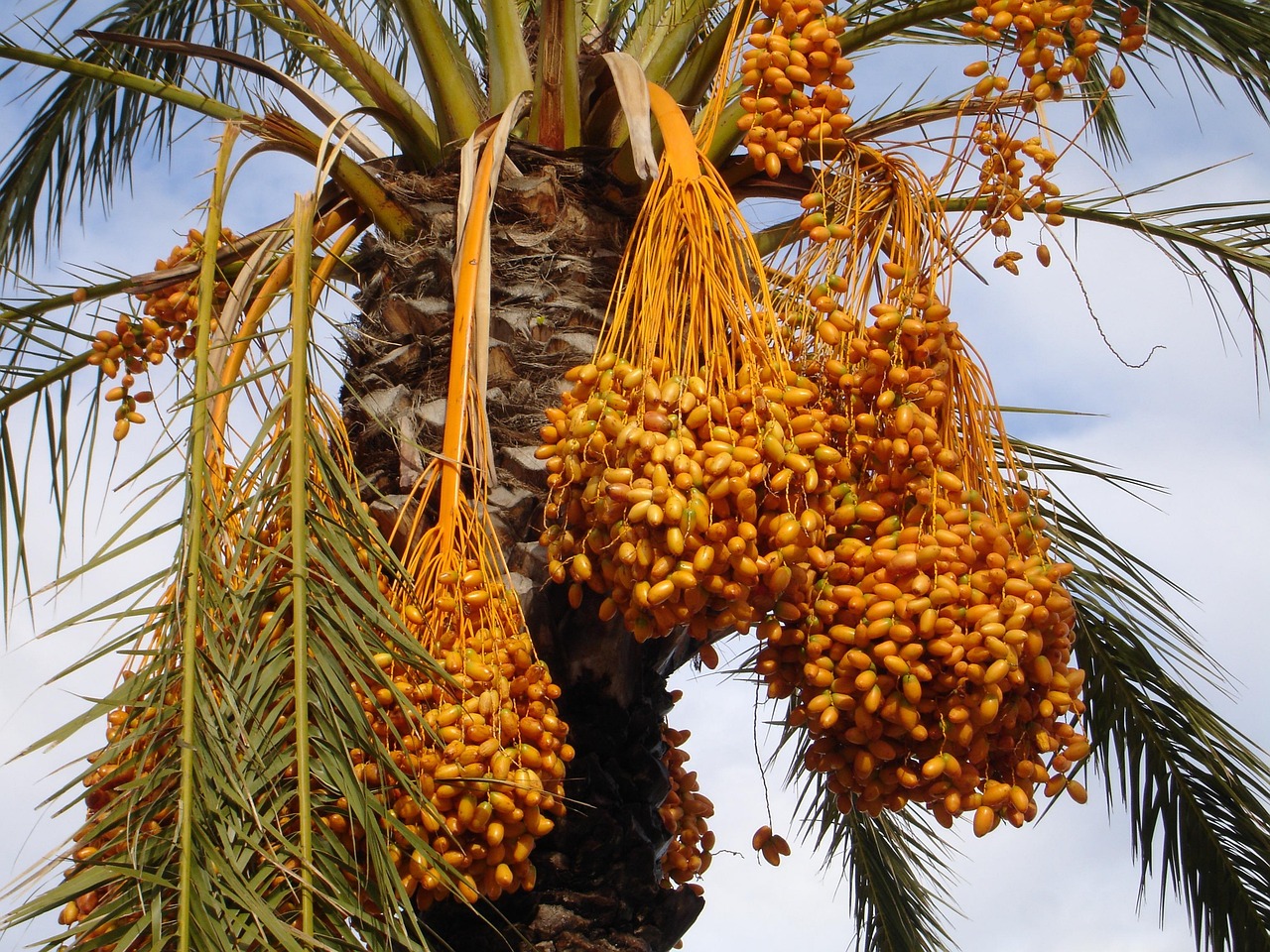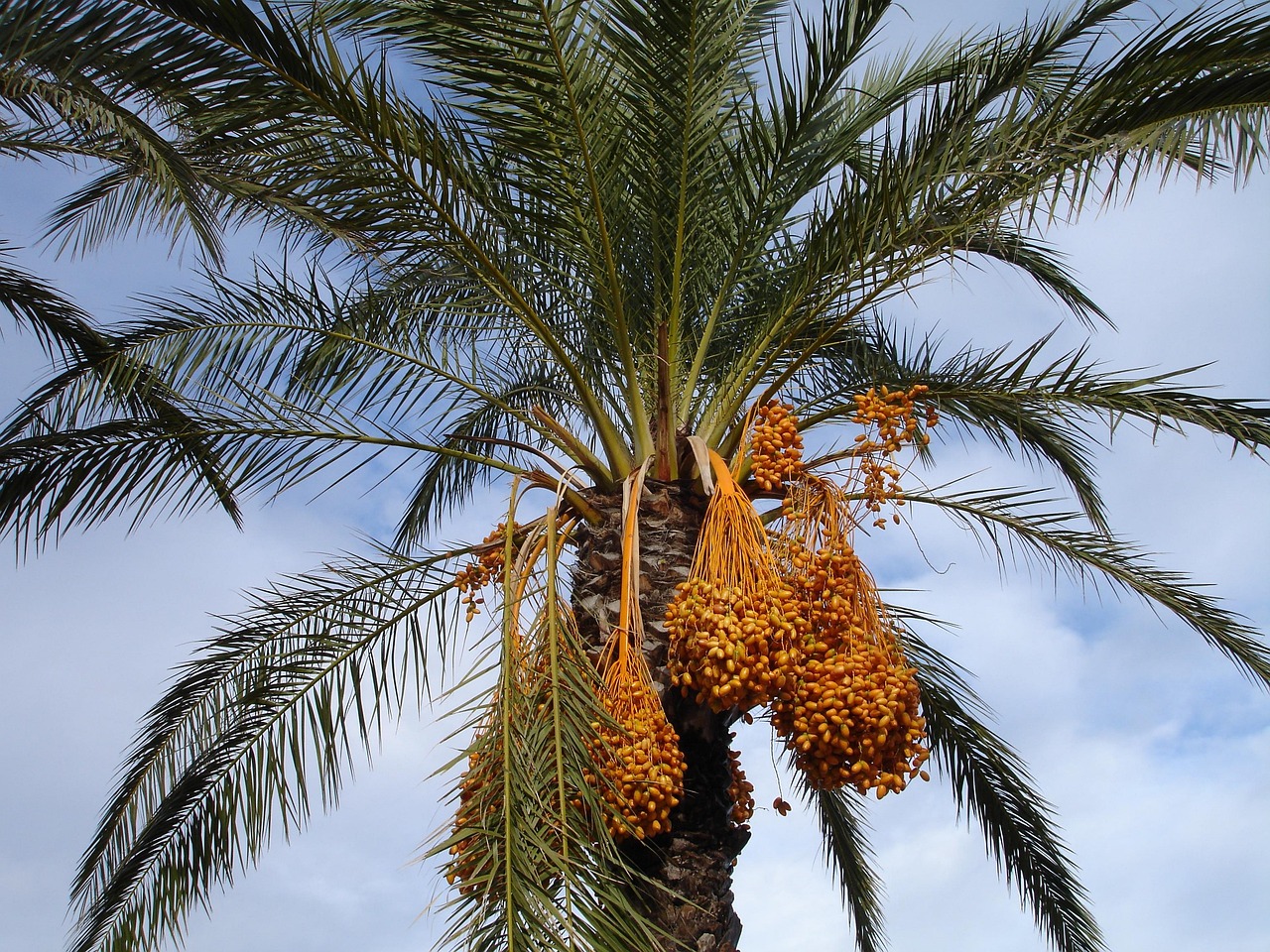Date palm pruning is essential for preventing harmful insect infestations. Regularly removing dead fronds and maintaining proper tree structure can reduce pest habitats, promote airflow, and enhance overall tree health, making the palms less susceptible to insect damage.
Date palms (Phoenix dactylifera) are not only valued for their fruit but also for their majestic appearance in landscapes. However, these trees can attract various harmful insects if not properly maintained. Pruning plays a crucial role in keeping date palms healthy and minimizing the chances of infestations by pests such as aphids, spider mites, and scale insects.

Understanding the lifecycle and habits of these pests is vital for effective management. Many insects thrive in the dense foliage that accumulates when fronds are left unpruned. By trimming away excess growth, you can create an environment that is less inviting to these pests.
Importance of Pruning Date Palms
Pruning date palms serves multiple purposes. It helps improve the aesthetics of the tree while also promoting its health. Here are a few key benefits of pruning:
- Enhanced Air Circulation: Removing old or dead fronds improves airflow around the tree. This reduces humidity levels, making it less favorable for pests.
- Increased Sunlight Penetration: Properly pruned palms allow more sunlight to reach the inner fronds, promoting healthier growth.
- Improved Fruit Quality: Pruning can lead to better fruit production by directing energy to fewer clusters.
- Pest Control: Regular pruning removes potential nesting sites for harmful insects.
To better understand the relationship between pruning and pest control, consider the following table that outlines common pests associated with date palms and their effects:

| Pest | Description | Impact on Date Palms |
|---|---|---|
| Aphids | Small sap-sucking insects that can reproduce quickly. | Weaken trees by extracting sap and can transmit diseases. |
| Spider Mites | Tiny arachnids that thrive in dry conditions. | Cause leaf discoloration and can lead to defoliation. |
| Scale Insects | Sap-sucking pests that attach to leaves and stems. | Reduce tree vigor and may lead to sooty mold growth. |
By understanding these pests, you can take proactive measures to manage them effectively. One essential practice is regular inspection of your date palms for signs of infestation. Early detection is key in preventing larger outbreaks.
When to Prune Date Palms
The timing of pruning is critical for effective pest management. Ideal times for pruning date palms typically include:
- Late Winter to Early Spring: This period is optimal as it prepares the tree for the growing season. Pruning during dormancy minimizes stress on the tree.
- After Harvest: For those cultivating dates for fruit production, pruning after harvest allows for better air circulation as new growth begins.
It’s advisable to avoid pruning during the heat of summer or fall when pests are more active. Additionally, late spring may encourage new growth that could be vulnerable to pests if not properly managed.

Pruning Techniques
Effective pruning techniques can significantly reduce the likelihood of insect infestations. Here are some recommended practices:
- Remove Dead Fronds: Cut off any fronds that are brown, dried out, or dead. These can harbor pests and diseases.
- Avoid Over-Pruning: Only remove what is necessary. Over-pruning can stress the tree and promote pest entry.
- Use Clean Tools: Always use sterilized tools to prevent the spread of diseases and pests between trees.
- Shape the Tree: Maintain a balanced shape that allows for optimal air circulation while keeping the tree visually appealing.
Implementing these techniques will help maintain the health of your date palms while deterring harmful insects. It is important to stay vigilant and monitor your trees consistently throughout the growing season.
In summary, effective pruning is an essential practice in managing date palm health and preventing insect infestations. By understanding the benefits, timing, and techniques of pruning, you can ensure your date palms remain thriving and beautiful while minimizing pest problems.

Identifying Insect Infestations
Recognizing the early signs of insect infestations is crucial for maintaining healthy date palms. Many pests can cause damage before they are visible, so regular monitoring is essential. Here are some common symptoms to look out for:
- Discoloration of Leaves: Yellowing or browning of fronds can indicate stress from pest activity.
- Sticky Residue: The presence of honeydew, a sticky substance excreted by aphids and other sap-sucking insects, is a clear sign of infestation.
- Webbing: Fine webs on the fronds may indicate spider mite infestations.
- Presence of Insects: Regularly inspect the undersides of leaves for visible pests.
By being proactive in monitoring these symptoms, you can take immediate action to prevent further damage to your date palms.
Common Insects Affecting Date Palms
Date palms can be affected by various insects. Understanding these pests helps in implementing effective control measures. Below is a brief overview of some common insects that pose threats to date palms:
| Insect | Description | Control Measures |
|---|---|---|
| Aphids | Small, soft-bodied insects that cluster on new growth and suck sap. | Use insecticidal soap or introduce natural predators like ladybugs. |
| Spider Mites | Tiny arachnids that thrive in hot, dry conditions. | Increase humidity around the tree or apply miticides as needed. |
| Scale Insects | Pests that attach to stems and leaves, often appearing as small bumps. | Remove by hand or use horticultural oil to suffocate them. |
| Mealybugs | White, cottony pests that feed on plant sap. | Apply a mixture of water and dish soap or use neem oil for treatment. |
Preventive Measures Beyond Pruning
While pruning is vital for controlling pests, there are additional preventive measures that can enhance the overall health of date palms. Consider implementing the following practices:
- Regular Fertilization: Providing adequate nutrients can strengthen the trees, making them more resilient to pests.
- Irrigation Management: Ensure proper watering practices to avoid over-saturation, which can create a breeding ground for pests.
- Pest Barriers: Installing physical barriers, such as fine mesh nets, can deter insects from reaching the trees.
- Companion Planting: Planting certain flowers or herbs nearby can attract beneficial insects that prey on pests.
Each of these practices contributes to creating an environment that is less conducive to pest infestations. Implementing a holistic approach will lead to healthier date palms in the long run.
The Role of Integrated Pest Management (IPM)
Integrated Pest Management (IPM) is an effective strategy that combines multiple practices to manage pests while minimizing harm to the environment. IPM focuses on understanding pest life cycles, environmental factors, and utilizing various methods for control. Key components of an IPM program include:
- Monitoring: Regularly inspect plants for signs of pest activity and assess the levels of infestation.
- Threshold Levels: Determine the acceptable level of pest damage before taking action. This helps avoid unnecessary treatments.
- Biological Control: Use natural enemies of pests, such as predatory insects, to help control populations.
- Cultural Practices: Implement good agricultural practices, including proper watering and soil management, to promote plant health.
- Chemical Control: When necessary, use pesticides judiciously and as a last resort, ensuring they are suitable for use on date palms.
Implementing an IPM strategy ensures that pest control is effective while minimizing any negative impact on beneficial organisms and the environment.
Tools and Techniques for Effective Pruning
Selecting the right tools for pruning date palms is essential for achieving optimal results. Here are some commonly used tools and their purposes:
- Hand Pruners: Ideal for cutting smaller fronds and branches with precision.
- Loppers: Useful for thicker branches that are difficult to cut with hand pruners.
- Saws: A pruning saw is necessary for larger fronds or branches that require more force.
- Ladders: Depending on the height of the palm, a sturdy ladder may be required for safe access during pruning.
When using these tools, it is important to follow safety precautions. Wear gloves and protective eyewear to prevent injury while working at heights or handling sharp instruments. Proper care and maintenance of tools will also ensure they remain effective and safe for use.
With the right knowledge and techniques in place, you can effectively manage your date palms. This not only prevents insect infestations but also promotes healthy growth and productivity throughout the seasons.
Seasonal Considerations for Pruning
Understanding the seasonal changes is essential when planning the pruning of date palms. Different seasons present unique challenges and opportunities for maintenance tasks. Here’s how each season affects pruning:
Spring
Spring is typically the best time to prune date palms. During this season, the trees are waking up from dormancy, and pruning can promote healthy growth. Key considerations for spring pruning include:
- Timing: Aim to prune before new growth begins. This way, the tree can focus its energy on developing fresh fronds.
- Remove Dead Material: Look for dead or damaged fronds that can harbor pests or diseases.
- Inspect for Pests: Spring is an ideal time to check for any overwintering pests that may have survived the colder months.
Summer
Pruning during the summer can be risky due to high temperatures and increased pest activity. However, there are circumstances where limited pruning may be beneficial:
- Minor Adjustments: Remove any fronds that are clearly dead or diseased to prevent pest attraction.
- Focus on Air Flow: If fronds are overcrowding, selectively trim some to enhance air circulation without causing stress to the tree.
- Avoid Major Cuts: It’s best to refrain from extensive pruning during this season to avoid stressing the tree.
Fall
Fall is a transitional period before winter, and while it is generally not recommended for heavy pruning, there are still maintenance activities to consider:
- Final Inspections: Check for signs of insect infestations or diseases that may have developed over the summer.
- Light Pruning: If necessary, remove any fronds that pose a risk of breaking off in winter storms.
Winter
Winter is usually a dormant period for date palms. Pruning during this season can be beneficial if done with care:
- Structural Pruning: This is a good time to shape the palm without risking damage from new growth.
- Avoid Stressing the Tree: Make sure temperatures are above freezing when performing any cuts to prevent shock.
Signs of Tree Stress and Pest Attraction
Identifying signs of stress in date palms is crucial for timely intervention. Stress can weaken trees and make them more susceptible to pests. Common signs of stress include:
- Pale or Yellow Leaves: Indicates nutrient deficiencies or poor watering practices.
- Bark Cracking: Often a sign of environmental stress or disease.
- Wilting Fronds: This may suggest under-watering or root problems.
- Increased Pest Activity: An uptick in pest populations often correlates with stressed trees.
If you observe any of these signs, it’s essential to assess your maintenance practices and consider adjustments to improve tree health.
Nutritional Needs for Healthy Date Palms
Nutrient management is vital for maintaining robust date palms that can resist pest infestations. A well-balanced fertilization program supports healthy growth and enhances the tree’s natural defenses against pests. Key nutrients include:
- Nitrogen: Promotes vigorous growth and leaf development.
- Phosphorus: Essential for root development and flowering.
- Potassium: Enhances overall plant health and resistance to diseases.
A soil test can help determine specific nutrient needs. Based on the results, you can adjust your fertilization strategy accordingly.
Irrigation Practices
Irrigation plays a significant role in the health of date palms. Proper watering techniques ensure that trees receive adequate moisture without becoming waterlogged. Here are some best practices:
- Deep Watering: Water deeply but infrequently to encourage deep root growth.
- Avoid Overwatering: Ensure proper drainage to prevent root rot and other water-related issues.
- Mulching: Apply organic mulch around the base of the palm to retain moisture and suppress weeds.
A well-planned irrigation strategy not only supports healthy growth but also contributes to pest management by reducing conditions favorable for infestations.
The Role of Beneficial Insects
Certain insects can be allies in preventing harmful infestations. Introducing beneficial insects into your garden can help maintain a balanced ecosystem around your date palms. Some beneficial insects include:
- Lacewings: Their larvae feed on aphids and other small pests.
- Ladybugs: Known for their appetite for aphids, they are effective in controlling their populations.
- Predatory Wasps: These wasps target various pest species, helping to keep their numbers in check.
Cultivating a diverse garden environment encourages these beneficial insects to thrive, promoting natural pest control alongside your pruning efforts.
The combination of effective pruning, monitoring, seasonal awareness, and integrated pest management strategies will contribute significantly to the health and productivity of your date palms while mitigating the risk of harmful insect infestations.
Challenges in Date Palm Maintenance
While pruning and pest management are crucial, maintaining date palms can come with its own set of challenges. Understanding these challenges can better prepare you for effective management. Some common issues include:
- Environmental Stress: Extreme temperatures, either hot or cold, can cause stress to date palms, making them more susceptible to pests.
- Soil Quality: Poor soil conditions can lead to nutrient deficiencies, impacting the overall health of the tree and its ability to resist pests.
- Pest Resistance: Some pests may develop resistance to certain treatments over time, making management more difficult.
- Inconsistent Watering: Irregular watering practices can lead to root problems and attract unwanted pests.
Addressing these challenges involves a combination of proper cultural practices, regular monitoring, and timely interventions. For instance, improving soil quality can require amendments such as compost or organic fertilizers to enhance nutrient availability.
Harvesting and Post-Pruning Care
The period following pruning is critical for ensuring the health and productivity of date palms. Proper care after pruning involves:
- Monitoring New Growth: After pruning, observe how the tree responds to ensure that new fronds are developing healthily.
- Continued Pest Management: Keep an eye on pest activity post-pruning. New growth can attract pests, necessitating continued monitoring and management.
- Watering and Fertilization: Adjust your watering and fertilization schedules to support the tree’s recovery and new growth.
By focusing on these aspects after pruning, you can help ensure that your date palms recover quickly and remain healthy throughout the growing season.
Educating Yourself and Staying Informed
Staying informed about best practices in date palm care, including pruning techniques and pest management strategies, is essential for success. Here are some resources to consider:
- Local Agricultural Extensions: Many regions have agricultural extension offices that provide valuable information on local pest issues and best practices for palm care.
- Online Forums and Communities: Engage with other date palm enthusiasts through online forums for shared experiences and tips.
- Books and Publications: Look for books specifically focused on date palm cultivation for in-depth knowledge.
- Workshops and Seminars: Participate in local workshops or seminars on horticulture and pest management to learn from experts.
The more you educate yourself about the specific needs of date palms, the better equipped you will be to manage them effectively and prevent harmful insect infestations.
Final Thoughts
Date palm pruning is an essential practice that not only enhances the aesthetic appeal of these majestic trees but also plays a vital role in preventing harmful insect infestations. By understanding the importance of timing, techniques, and seasonal considerations, you can create a robust maintenance program that promotes healthy growth.
Incorporating integrated pest management strategies alongside regular pruning will further increase the resilience of your date palms. Monitoring for pests, recognizing signs of stress, and providing the necessary nutrients and irrigation are all critical components of successful date palm care.
Through diligent efforts in maintaining your date palms, you can enjoy their beauty and productivity while minimizing the risks associated with insect infestations. This holistic approach ensures that your trees remain vibrant and healthy for years to come.
By implementing these strategies, you position yourself as a knowledgeable caretaker of your date palms, ultimately leading to a thriving garden or orchard that showcases the beauty and benefits of this remarkable species.
